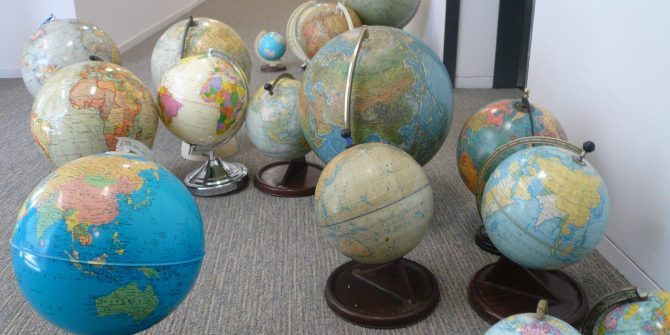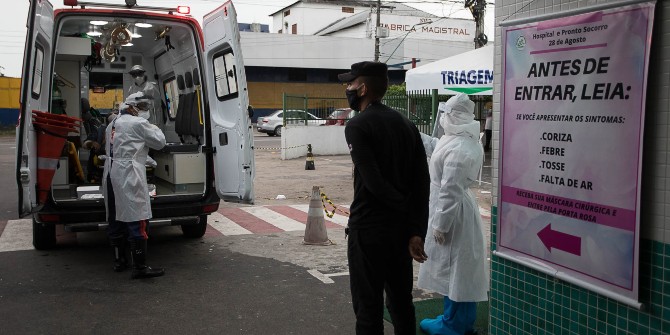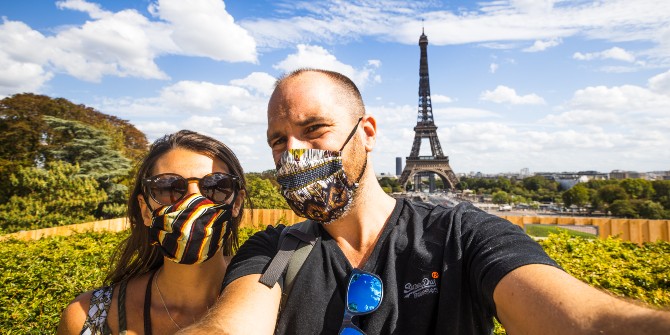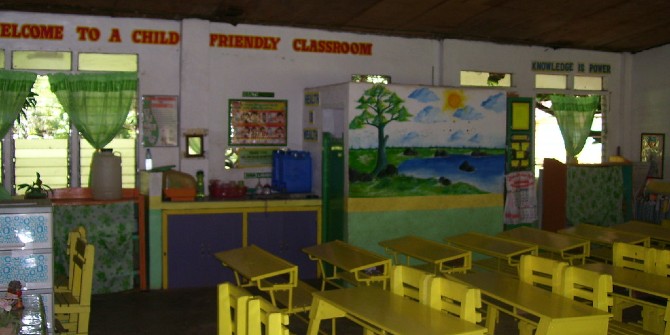The IMF and World Bank have begun to tackle the global emergency. But they need to do far more. Erik Berglof (LSE) proposes nine ways in which governments can ensure that international financial institutions have sufficient resources.
The two sides of the COVID-19 crisis – the medical emergency and the economic impact – are closely intertwined. Many emerging and developing economies feel the economic impact first. Falling commodity prices, drops in tourism revenues, reduced remittances from citizens abroad, and the rapid outflows of capital are ravaging their economies, even before the virus has taken hold. In turn, the economic devastation will undermine their capacity to respond to the virus and threaten social and political stability in the medium term.
The pandemic is exposing the global financial safety net and development finance architecture – of which the IMF and the World Bank are central elements – to the most serious shock since the two institutions emerged out of the ruins of two world wars and the Great Depression. The G20 finance ministers presented a Global Action Plan to fight the COVID-19 crisis ahead of the IMF/World Bank (virtual) Spring Meeting in April. The Plan is a good first step, but we need far, far more. We must urgently find new and innovative ways of putting global financial muscle, including the private sector, behind our multilateral institutions. This will require the same kind of bold leadership, innovative thinking and institution-building that marked their founding.
The initial responses from the IMF and the World Bank, and the regional development banks, have been powerful. But the demands on them will only increase as the crisis accelerates, especially in the emerging and developing world. They must be allowed to use their existing resources more effectively, and will ultimately need additional ones.

There have been many ideas for how to strengthen the development finance architecture and the global financial safety net. Several of them were discussed in the final report from the G20 Eminent Persons Group on Global Financial Governance (EPG), presented a couple of years ago. Here I suggest three measures for each of the global financial safety net, development finance architecture, and the capacity of the core institutions to ‘crowd in’ private and institutional capital.
Three ideas on how to strengthen the IMF’s firepower
The global financial safety net – with the IMF at the core, complemented by a patchy and incomplete system of regional arrangements mainly in Europe and Asia – is critical in providing liquidity and maintaining financial stability. Yet the IMF’s current firepower is not enough to deal with the magnitude of this crisis. It is already processing more than 100 requests from countries for emergency financing, and another 40 or so are in the wings. Countries need liquidity to address the medical emergency, but most of all to deal with the economic impact.
- Establish liquidity support lines: Create a liquidity facility to which pre-qualified countries in need could turn. Pre-qualification could avoid the stigma associated with applying for support. Such liquidity lines could be supplemented by IMF intermediating support lines, from systemic central banks to central banks, in well-run emerging economies with liquidity problems.
- Issue Special Drawing Rights (SDRs): The current arrangements, which rely on the IMF’s existing resources, do not meet the enormous liquidity requirements and may eventually lead to solvency threats in many countries. The most direct way to provide additional capital to the IMF would be to issue additional Special Drawing Rights, the special currency through which the member states support the IMF. The EPG carefully avoided this proposal, due to the limitations to its mandate, but an SDR issue would both increase firepower and offer a valuable stimulus to the global economy.
- Transfer unused Special Drawing Rights: Many countries, particularly advanced economies, do not borrow up to their quotas with the IMF. These unused, or dormant, quotas could be transferred to countries with greater needs, either through an arrangement within the IMF, or via an external vehicle. This could also be part of an issuance of new SDRs to ensure that new resources really go to the countries that are most in need.
Three ideas on how to enhance the lending capacity of MDBs
The multilateral development banks (MDBs) also need reinforcement. The World Bank has responded with a massive effort to help address both the medical and economic emergencies. It has strong expertise in healthy and well-functioning cash transfer programmes, and local community schemes, in a large number of countries, which can be used to reach the most vulnerable. As the economic impacts of lockdowns and supply disruptions make themselves felt, financing needs will increase dramatically. Most governments in emerging and developing economies lack the resources to introduce meaningful monetary and fiscal stimulus.
Fortunately, many of the multilateral development banks were recently recapitalised, or have the capacity to respond in the short term. But on the current trajectory, the MDBs will run out of “headroom,” impeding their ability to respond. Furthermore, the quality of their portfolios will deteriorate as the economic impact from the pandemic works its way through the system. There are already signs that the costs of borrowing are going up for some of the weaker institutions. At some point, the rating agencies will look at their portfolios and the creditworthiness of their shareholders.
- Establish a liquidity backstop for MDBs: Unlike commercial banks, most multilateral development banks lack automatic access to support from governments in the case of a liquidity shortfall. Rating agencies would upgrade them if a group of central banks came together, possibly intermediated through the IMF, and provided a liquidity facility. The European Investment Bank has access to such support from the ECB.
- Introduce a new form of equity capital: A related proposal would be to provide the development banks with a new form of capital. Today they have two types of capital – paid-in capital which counts as equity on the banks’ balance sheets, and callable capital which can only be used when a development bank is closed down to pay off holders of bonds in the institutions. It would be useful to have an intermediate form of capital that could be called upon when banks are exposed to a shock like this one. Again, rating agencies would recognise such support in their ratings. The European Stability Mechanism has this type of contingent capital.
- Make a G20 “whatever-it-takes” statement: Even if these two ideas cannot be realised at the moment, the G20 could, with support from other key shareholders, make a “whatever-it-takes” statement, promising that additional capital would be forthcoming if the situation deteriorated further. While such a statement might not immediately impress rating agencies, it could inspire innovation and big ideas, inside and outside the MDBs. It would also reassure governments in the worst-hit emerging and developing economies that resources will be forthcoming.
Three ideas on how to leverage the private sector
Yet the governments behind both the IMF and the development banks are also weakened by the crisis, and domestic needs will be gigantic. New ways must be found to ‘crowd in’ private and institutional capital. The EPG Report pointed to steps that could be taken.
- Allow the IMF to borrow from the markets: The IMF could be allowed to borrow in the capital markets, potentially using currently unused SDRs as collateral. Such lending would have to be associated with important safeguards to prevent private sector bias in lending, but it could significantly increase IMF firepower.
- Pool balance sheets to increase MDBs’ borrowing capacity: On the side of the development finance institutions, there should be scope for more pooling of balance sheets: after all, they have essentially the same shareholders, if in somewhat different constellations. There are limits to what can be achieved through such efforts, but this could prove very important for smaller institutions with concentrated portfolios. As a by-product, the participating institutions would be encouraged to standardise loan agreements and generally become more coherent as a system.
- ‘Crowd in’ private and institutional capital on country platforms: A core EPG proposal is to establish country platforms where governments can coordinate their collaboration with international financial institutions, including bilateral donors and the entire UN system. These platforms, now being piloted in a number of countries, should be opened up to the private sector and be used to ‘crowd in’ private and institutional capital by using the international financial institutions to mitigate risk for investors. This would also ensure that agreed governance standards are enforced, and debt sustainability requirements respected.
When the EPG was first set up, some questioned why the group should deal with both development finance architecture and the global financial safety net in the same report. The COVID-19 crisis has proven how intimately linked they are. These nine ideas would bring together the global financial safety net, the development finance architecture and the private sector to create a powerful global response.
This post represents the views of the author and not those of the COVID-19 blog, nor LSE. A longer version of this blog was published as an article by the World Economic Forum.





